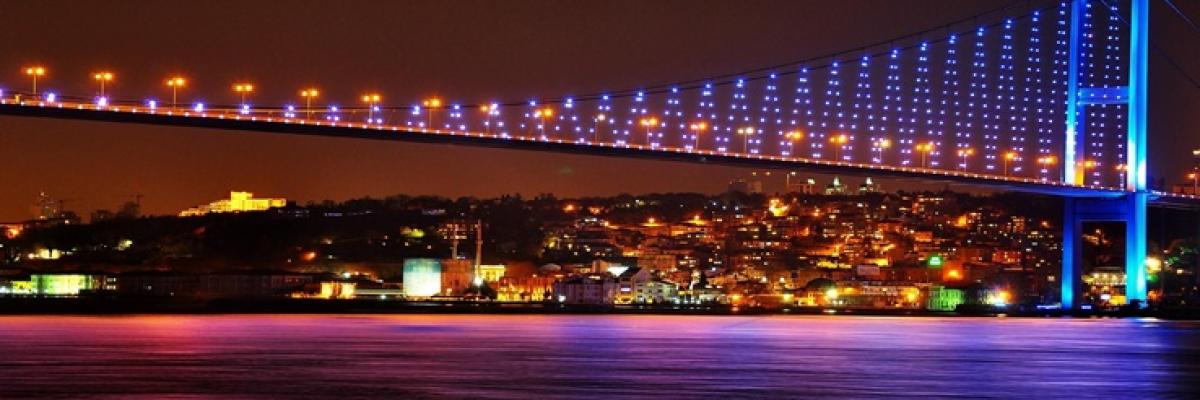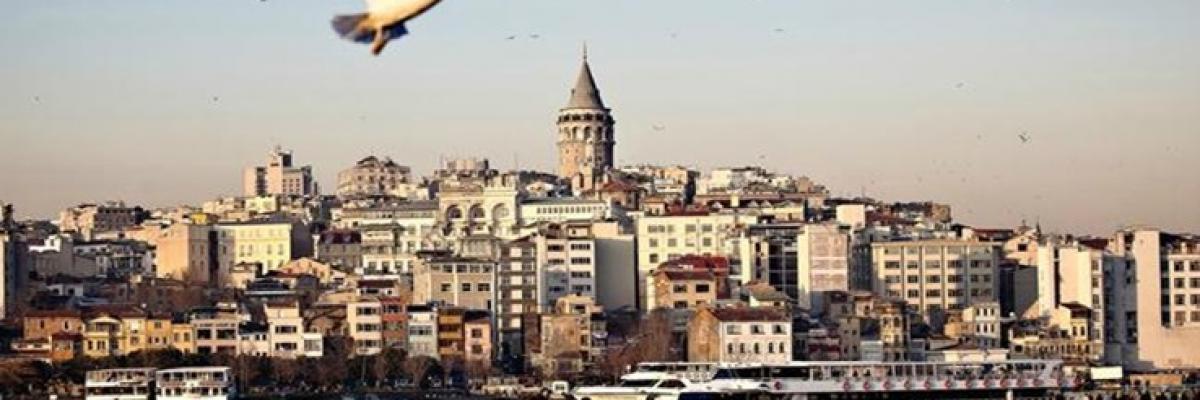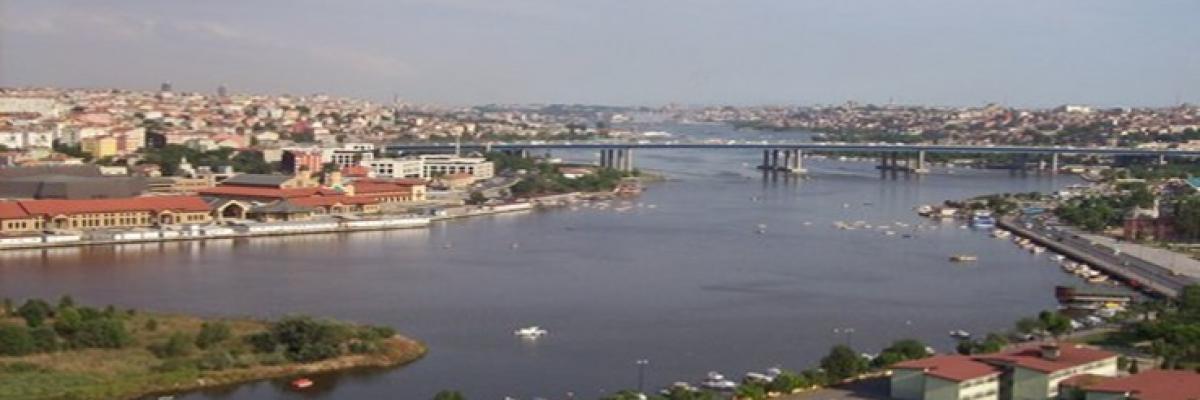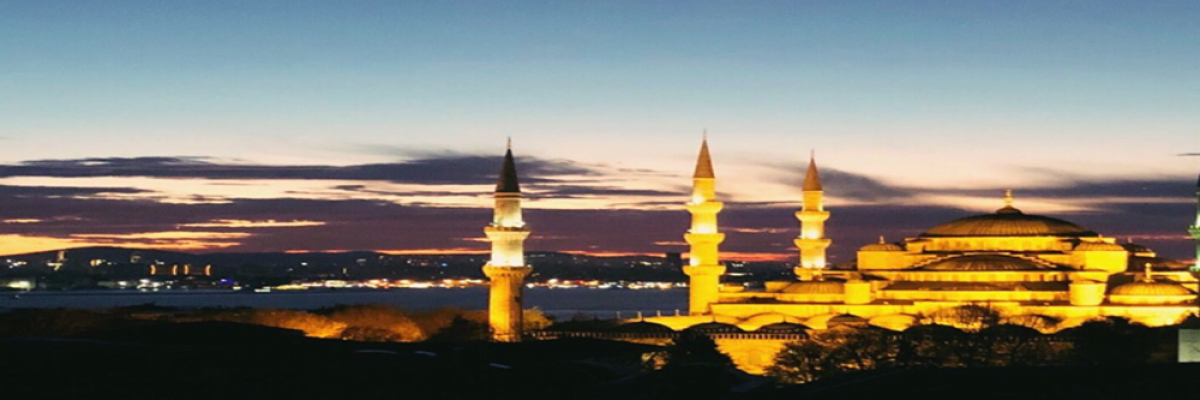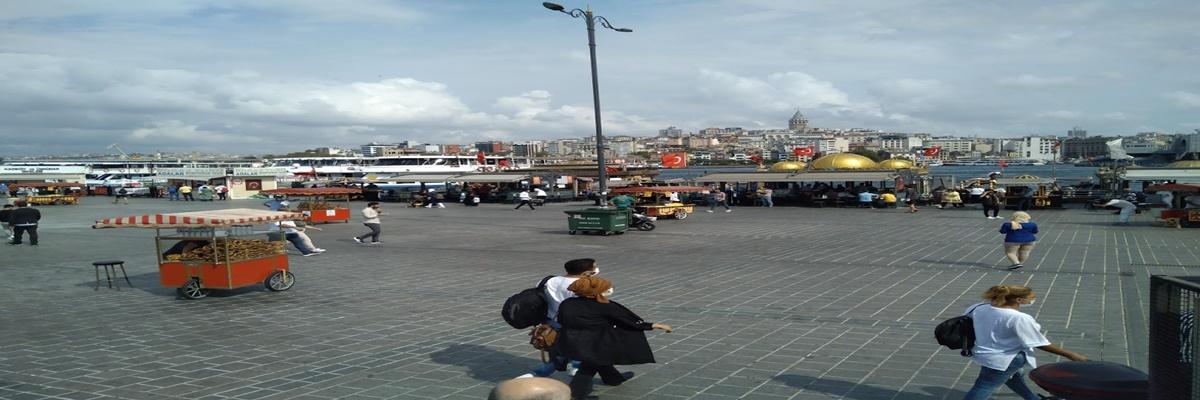Benın
BENIN

General Information
The country, which was a colony of France in the past, declared its independence and took the name of the Dahomey Republic in 1960. Later, the country name was changed to its current name Benin in 1975.
The capital of Benin is Porto Novo, its second largest city. They use the CFA franc as their currency.
Africans constitute the majority of the population.
Its official language is French. Besides the official language, local languages are spoken throughout the country.
Turkey is in the local time clock back 1 hour.
Benin is among the countries that require a visa, you must have made your visa application and received a visa to Benin before you go.
Location
It is located in the west of the African continent. It borders Togo in the west, Burkina Faso in the northwest, Niger in the northeast and Nigeria in the east.
Most Visited Cities
Porto Novo, Cotonou, Abomey
Climate / Weather
Equatorial climate is seen. Months are dry except for rainy seasons. February - April is the hottest period of the year.
When to Go?
The period between November and February is cool and dry. For this reason, it is the ideal time to go to Benin.
Country Cuisine / What to Eat What to Drink?
When you go to Benin, you can often see dishes made with beans, rice, chicken and goat meat at street vendors.
Local beers and Palmiye wine are also among the flavors that should be tried as drinks.
The People's Republic of Benin (République Populaire du Benin), which was named Dahomey until 1975, is bordered by the Atlantic Ocean in the south, Nigeria in the east, Togo in the west, and Burkina Faso and the Niger Republic in the north. Its area is 112,622 km2, its population is 4,592,000 (1989), its capital city is Porto Novo. Its important cities are Kotonu (Cotonou), Abomey, Uida (Ouidah), Cugu (Djougou) and Saraku (Sarakou). It is a small country physically, economically poor and politically unstable.
Physical and Human Geography.
Benin, a country sandwiched between Togo and Nigeria, is 125 km. It has a long coastline. As you go from the coast to the north, the distance between east and west expands suddenly from the 9th parallel and reaches 325 kilometers at the level of Natitungu mountain. The distance between the southernmost point and the northernmost point of the country is 700 km. is up.
Benin is geographically divided into three main regions. The coastal region, which has flat and sandy lands, is covered with lagoons and lakes connected by channels. The coastal region, which looks like a plain with alluvial and fertile soils, descends towards the Niger River basin in the northeast, while the northwest rises towards the Atakora mountainous mass. 50 km from the coast. inside, low hills, eroded. The middle zone, which is formed by fertile clayey soils and low-height sections, looks like a plateau. There are settlements such as Abomey, Zagnanado, Ketou and Adekambio in this region, where large marshes are encountered in the gorges and rises up to 230 meters. The northern region of Benin consists of the low-rise Atakora mountain mass, which is a continuation of the mountain range in Togo, and the Niger plains in the northeast.
Benin is considered rich in streams. While some of the various streams that originate from the Atakora and Ndali-Bimbereke mountains flow into lagoons and lakes in the coastal area, some of them flow northward and join the Niger and Olta rivers. The longest river in the country, the Ueme (Oueme, 450 km.) And the So river, drain their waters into the Nokoue lagoon near Porto Novo. While Kufe (Couffo), which originates from the lands of Togo, pours into the lagoon near Aheme, the Mono river, which originates from the Cugu mountains, enters the land of Togo and reaches the sea here. In the Volta river basin, many streams of various sizes such as Kouande, Kiatiko, Kara, Kopargo and Keran flow towards the west and reach the lands of Ghana and join the Oti river. On the other hand, the Macrou, Alibori and Sota streams that irrigate the Niger plain flow northward and join the Niger river.
Equatorial climate is observed in the coastal region of Benin, which is away from the monsoon effect. While the average annual precipitation reaches 1300 millimeters in the south of the country, it decreases towards the north. The rainy season continues in the north from May to September, while in the south it continues from March to June and from September to November. In the southern region, the annual average temperature varies between 25-27 degrees.
The south of the country, which has fertile land in terms of vegetation, is covered with oil palm, coconut and mahogany trees. As you go inland, the productivity of the land decreases and the forest areas decrease and become savannah. Forests are found on the banks of streams and in the mountainous mass of Atakora. Sahel-type steppes dominate the regions close to the northern border of the country.

Population.
The country's population of more than 4.5 million is made up of various ethnic groups, and the most populous group is the Funds living in the southern and central regions. The Yorubas live near the Nigerian border, the Acalar, Mins and Guns in the southeast and southwest, the Baribas in the north, the Somba between Atakora and Togo, and the Dendis in the Niger plains. Apart from these, there are also various small communities and especially the coastal regions with Europeans and returnees from Brazil. The Funds, which form a branch of the Ehoue race, are concentrated in the cities of Allada, Abomey and Porto Novo in regions close to the Togo border and deal with agriculture and trade. Funds and Yoruba played important roles in the administration of French West Africa during the colonial period. The diversity of the population in terms of language, religion and ethnicity makes it difficult to establish political unity in the country. In Benin, one of the most densely populated countries of West Africa, although an average of 34.9 people per square kilometer falls, this rate rises to 120 in the south and decreases than the average in the north. In the country where the birth rate was 51.1 per thousand (1975-1980 average), the death rate was 24.6 per thousand for the same period.
Urbanization is very low in Benin and 84 percent of the population lives in rural areas. Developed cities are the capital city Porto Novo and Kotonu in the coastal zone. Paraku in the north and Abomey, a historical city in the middle, are important centers. The population of Kotonu, which has a modern appearance, is around 400,000, and Porto Novo's is around 150,000.
A large number of local languages are spoken in the country, the main ones being Fon, Mina, Yoruba and Dendi. Those in the south belong to Eva and the ones from the north into Volta language group. Its official language is French.
Religion.
In Benin, where various local African beliefs live and fetishism is common, a significant part of the people are pagans. Each pagan tribe has a fetish called different names and usually in the form of a statue that represents a human or an animal. Although not all fetishes are seen as symbols of holiness, they represent a simple sanctification of the forces of nature. There is also a belief in a supreme being that is creative and regulates the universe.
It was not possible to accurately determine the distribution of the population in the country according to religions. A source from 1964 states that 60% of the population is Muslim, 11% is Christian and the rest is pagan. However, more recent sources show the Muslim population at varying rates between 15% and 40%.
Islam, which entered Benin in various ways, first began to penetrate from the north of the country. The Mali Empire established a commercial colony in the Songay region in the 13th century and was instrumental in the spread of Islam in this region. The Muslims there played an important role in interregional trade by raising commercial caravans to countries off the coast of West Africa, transporting slaves from the north along with salt and other products to the south, and from the south to Niger countries of cola, gold and other goods. Thus, the Muslim merchants in the cities that were formed on the caravan routes connecting the north of the country to the south, ensured the recognition and spread of Islam there. The conversion of local leaders to Islam and Muslims' marriage with local women also contributed to the spread of the religion of Islam.
Another development that contributed to the spread of Islam in Benin was the removal of the Songay State by Moroccans at the beginning of the 17th century, when a group of Muslims came and settled in the northern regions of the country. The ancestors of the Dendiler living in the country today are Muslims from Songay. According to a census made at the beginning of the 20th century, it is understood that 10,000 of 16,000 Dendi were Muslim. Dendiler, who live in important trade centers Cugu, Paraku and Nikki, have been in contact with Muslim Hevsalar throughout history, and have been influenced by their culture and language.
On the other hand, Pöller, who came to Benin from the east and northeast parts in the 18th century and whose main profession was shepherd, settled in the central part of the country and formed an important Muslim community. In addition, some of the Baribas living in Borgu and its surroundings entered Islam in the 19th century. Those who brought Islam to the south of Benin were Muslim Yoruba merchants, who carried commercial goods from Nigeria to Porto Novo, Uida and Kotonu, and some stayed here and played a role in the spread of Islam. A group of Muslims who returned from Brazil in the mid-19th century also served the spread of Islam in the country. In addition, the murshid, who came to the country from Nigeria, founded lodges in some cities and contributed significantly to the establishment of Islam, especially in the southern regions.
Muslims in Benin are Malikî, most of them belong to the Ticâniyye and Kādiriyye sects. Although some of the Muslims in the north belong to the Hamâliyye sect, their number is not much. There is a difference in understanding among those who have entered different sects, there are also some differences between the religion in practice and the literary religion.

Education and Culture.
Education in Benin is under the control of the state, it is secular and free of charge. Primary education is five years, the first semester of secondary education is four, and the second semester is three years. Students receive nine months of education a year and three months of military and ideological practice in secondary education. According to the figures given by UNESCO, 74.1% of adults are illiterate and only 59% (1986) of children of reading age can go to primary school. Students attending secondary schools make up 19% of this age group. UNESCO launched a major project in 1986 to open sixty-seven new schools in the northern part of the country. The only university in the country is the University of Benin, which was opened in 1970.
Economy.
The economy of the country is based on agriculture. Agriculture is carried out on an area of about 800,000 hectares and two thirds of the working population are employed in the agricultural sector. According to 1985 figures, 425,000 tons of corn, 708,000 tons of cassava, 776,000 tons of ground apples, 78,000 tons of millet are produced annually. In the southern and central parts of the country, large quantities of oil palm are grown and the resulting palm oil is exported; Core products such as coconut, tickle grass and peanuts also form other export items. Although there is flax, tobacco and coffee production, it is not of great importance. Cassava and corn production is gradually increasing.
Animal husbandry is mostly carried out in the mountainous regions in the north of the country, using traditional methods, and according to 1985 figures, 925,000 bovines and 2.2 million small ruminants are raised. International financial institutions such as the European Development Fund, the Arab Development Bank, the Islamic Development Bank and the African Development Bank provide credit support for the development of livestock and agriculture in Benin. Although fishing is done in rivers and lagoons, the filling of lagoons with salt water negatively affects fishing. Sea fishing is not very developed.
There are phosphate, small amounts of gold, titanium, iron and chromium deposits in the Atakora mountainous mass of the country, which is not very rich in minerals, and limestone is extracted especially for cement production. After 1980, more than three times the country's needs are extracted from two wells opened by a Norwegian company in the oil field in Sémé off Kotonu, producing 10,000 barrels of oil per day.
The industry in the country is very weak and there are some manufacturing plants where products such as oil palm, coconut, corn and flax are processed. However, the share of the industrial sector in national income increased from 5% in 1965-1966 to 14% in 1984. In recent years, investments have been made in the fields of textile, fisheries and palm oil with external loans. Large capacity industrial enterprises are in the hands of the state.
In the field of transport, the country's infrastructure is relatively good. The total length of the railways, whose construction started in the colonial period, reached 980 and the highways reached 5200 kilometers. Efforts are made to transport the railway, which is laid from Kotonu to Paraku, to Niger. Highways to Burkina Faso, Niger and Nigeria are used in transit trade. Kotonu Port has an important place in maritime transport and the airport in Porto Novo has an important place in air transport.
Benin, whose trade and balance of payments is constantly open, conducts its foreign trade with its neighbors and European countries. While it can buy machinery, chemicals, petroleum products, tobacco and grains from abroad, it can only sell some agricultural products. On the other hand, the foreign currency sent by the people of Benin to their country constitutes an important source of income. The economic instability and difficult-to-solve problems in the country are also the main causes of political instability.

History.
The history of the tribes living in the northern region of Benin has not been compiled. The history of the Funds and other tribes near the coast has been known since the end of the 15th century, when the Europeans reached these shores. When Portuguese sailors arrived on the shores of Benin, there were three kingdoms, Allada, Adjatché and Dahomey, founded by the Funds. Of these, the Dahomey Kingdom is the most famous and fought with French colonists for a long time. The Dahomey Kingdom, which had a serious presence in the early 17th century, soon expanded and subjugated the surrounding tribes. Ouegbadja (1645-1685), son of King Dakadonou, who expanded the borders of the country, also made Dahomey a stronger state and established relations with Europeans who came to the coastal area for slave, gold trade and religious purposes.
In the second half of the 17th century, the coastal region was one of the most important places in the slave trade, where the British and French were active. King Agaca (1708-1732), who replaced Ouegbadja, captured the cities of Allada and Uida, where the castles built by the French, but could not withstand the attacks of the Oyo Kingdom in the north, and some of the lands of Dahomey fell into this state. The influence of the French, who established castles and farms in the coastal region, increased gradually thanks to King Agaca, who provided some convenience to the Europeans in the slave trade.
Until King Gezo (1818-1858) came to power, there were various disturbances in Dahomey and the country was weakened by the slave trade. Gezo expanded his country northward, freeing his country from the rule of the Oyo Kingdom. He tried to ensure the cultivation of new agricultural products. The French settlement of Grand Popo and Uida, which was a conflict between England and France from 1840, coincided with the time of King Gezo. With the treaty between France and Gezo in 1851, France gained some commercial concessions. During the time of Glélé (1858-1889), who replaced Gezo, their influence in the region gradually increased as the French settled in Kotonu and Agu. With the Kotonu Treaty of May 1868, France's acquisition of wide rights on the shores of Benin and the increase of its influence there led to the protest of England and therefore some conflicts arose.
Establishing a protectorate administration over Porto Novo and Kotonu in 1882, France increased its power in the region with some agreements it made with local administrators after the Berlin Congress and turned the region to occupation. But King Behanzin, who protested France's occupying and colonial attitude, started an armed struggle. In 1893, French troops entered Abomey, the center of the Dahomey Kingdom, ending King Behanzin's rule and annexing the country to their colonies. Behanzin, who was exiled first to the island of Martinique and then to Algeria, died here in 1906.
Joining French West Africa in 1904, Dahomey was administratively divided into three regions under colonial rule. The representative of France here was the governor-general, who lived in Porto Novo and was equipped with broad powers. In the administration of the country, the governing council established under the chairmanship of the governor general remained the highest body until 1946. Municipal organizations were also established in the three important cities of the country, Porto Novo, Uida and Kotonu. After the war, an elected general council with broader powers was established. This council sent five delegates to the parliament in Dakar, the capital city of French West Africa, and two representatives to the parliament of the French Union in Paris.
When Dahomey was under colonial rule, disturbances and some uprisings occurred in various parts of the country during the years of World War I, 1923 and 1936. From the beginning of the 20th century, with the birth of the local press, nationalist demonstrations gradually intensified. The struggle of the press organizations against the corruption of the colonialists with the magazine called La Guide du Dahomey, which started to be published in 1921, became an important factor in the political and social history of the country.
The first constituent assembly elections were held after the war in the country, which was dependent on the allies along with the French West Africa during the World War II (October 1945). Although the country's first political party, the Union Progressiste Dahoméenne, was founded in April 1947, some political turmoil arose a few months later, when one of the party's powerful figures, M. Ahomadegba, left to found the Bloc Populaire Africaine. M. Apithy also left the Dahomey Progressive League in 1951 to form the Party Republicain du Dahomey. Apart from these, there were also some political groupings in the north of the country in the early 1950s led by M. Hubert Maga and in 1953 the party called Mouvement Démocratique Dahoméen was founded; it was later renamed Rassemblement Démocratique Dahoméenne. He played an important role in the political life of the country as the third power alongside the Parti Republicain du Dahomey led by the Union Démocratique Dahoméenne Apithy and the Rassemblement Démocratique Dahoméenne led by Maga.
The country, which agreed to join the French Community in 1958, achieved autonomy within the community; In August 1960, he gained full independence from France and left the community. After the new constitution came into force, Maga's Dahomey Unity Party won the elections held in December, and Maga became president and Apithy became its deputy. The authoritarian behavior of the Maga administration to form a single party and the deterioration of the economic situation, competition among tribes, and dissatisfaction with the army and trade unions led to turmoil.
Maga was removed from power by a military coup in October 1963, and Colonel Christophe Sogo took power. With independence, Dahomey fell into serious political instability. Six government coups took place in the period between 1960-1972, when the instability in the country was most intense. Economic instability and ethnic and cultural differences played the most important role in the political turmoil. The armed coup of Lieutenant Colonel Mathieu Kerekou in October 1972 abolished the "collective leadership" system established at the end of the 1970 elections, and Kerekou became the sole judge of the country. In the new period that started with the Kerekou government, attention was paid to nationalism and to pursue a policy in conflict with French interests. In March 1974, Kerekou confiscated French-owned businesses and subsequently declared Marxist-Leninist ideology to be the official ideology. It nationalized some companies, banks, schools and service organizations. He reorganized the judicial system. He tried to reduce the effects of religious and moral beliefs on society. Having completely neutralized the former politicians, Kerekou established an authoritarian regime of the one-party-based Parti de la Révolution Populaire du Bén and changed the country's name to the People's Republic of Benin at the end of 1975. In Benin, where relations with France deteriorated, the influence of this state was reduced and military cooperation was ended and an army of volunteers was established.
Kerekou, in power since 1972, enacted a new constitution in August 1977. Under this constitution, the legislature was entrusted to the Assemblée Nationale Révolutionnaire with 336 members. The number of members of this assembly was reduced to 196 in 1984. The parliament, which was formed at the end of the elections held on June 18, 1989 with a single party list, re-appointed Kerekou to the presidency for a five-year term (2 August 1989).
Kerekou administration, which attaches importance to agriculture-based production, removed foreign private investments from the country after 1980 and established an economic structure based on central planning. Since 1984, it has continued "stand by" negotiations with the IMF and the World Bank. It especially improved relations with socialist countries. The deteriorating relations with France started to improve after the socialist party came to power in France and in 1983, French President F. Mitterand officially visited Benin. In the same year, diplomatic relations were established with the United States and Benin started to turn towards the West again. Under Kerekou, Benin faced serious economic difficulties. Kerekou visited some Western countries to seek foreign aid in 1986 and received military and economic aid from France and the Soviet Union. He became a member of the Islamic Conference Organization in 1983.

Cotonou
Cotonou is not the capital of Benin but it feels like that. If you are going to Africa for the first time, the occupancy rate of the city may be a little daunting. On the other hand, there are beaches covered with palm trees and sightseeing spots such as Pendjari National Park. If you happen to be around during the festival, you can take a closer look at the voodoo events.
Ouidah
It is a city influenced by France and Portugal due to various events in history. Located 40 kilometers from Cotonou, Ouidah offers you beautiful museums if you are interested in African history. The museums on slavery and voodoo are full of informative artifacts, first on Benin, then on Africa, other than Ouidah.

Porto novo
It is the capital of Benin and under the rule of the former France, it became the capital of the French. If you first visited Cotonou and moved to Porto Novo, you will understand better why this is the capital. Cultural activities are more in the capital and Portuguese still has an influence in the city. You can visit the royal palace, noble gardens, and the museum of the Porto Novo kings.
Abomey
In the 17th century, about 300 years ago, it was the capital of Old Dahomey. The main reason for the trips to Abomey is the Royal Palace of Abomey. This architectural structure has managed to enter the UNESCO World Heritage List. Although it has areas that have been destroyed, it still has an enormous historical value. The life stories of the kings living in the palace are fascinating.
Grand-Popo
It has an interesting history as it played an important role in the slave trade. The town, which is now a holiday village, surprises people how it used to be. About 1 hour from Cotonou, Grand-Popo is a great place to relax and swim. If you wish, you can walk around the Mono River and watch exotic birds.

Natitingou
Conveniently located 50 kilometers from Pendjari National Park, Natitingou attracts tourists with its unique attractions. There are documents describing the lifestyle of the Somba people in the museum, which was built when the city was a French colony. Do not leave here before trying the local traditional Shea butter.
Bohicon
You can spend a few days in Bohicon without getting bored. Bohicon, which looks like a modern city, has the best markets in Benin. Markets are very crowded in the morning hours. Keep in mind if you don't want to get involved in the crowd.

Tanguieta
It is a great place to see buildings from the colonial times of the French. It welcomes its visitors with a population of 20 thousand. Although not as much as Bohicon, you can also visit the lively markets here. There will be various discovery points around you such as waterfalls, national park, wildlife.
Parakou
The estimated population of Parakou, Benin's second largest city, is 200,000. It doesn't feel as crowded as Porto Novo and Cotonou due to the wide streets and open spaces. The economy of the city is based on cotton, textile and peanut oil. In Parakou you have the chance to discover traditional Bariba architecture and places specializing in traditional beer making.
Nokoue Lake
Nokoue village and lake are one of the important regions for bird watching. But unfortunately, the place touched by human hands deteriorates after some time. Here, too, natural life is under threat due to pollution.
Tchaourou
Tchaourou, about 60 kilometers from Parkou, is primarily an agricultural city. At the same time, its commercial aspect has developed due to its relations with Nigeria. Some of the factories are open to visitors. Guide tours are organized for the enthusiasts.
Nikki
Nikki, the capital of historic Bariba, is home to an ancient palace that controls a large area, including some of Nigeria. With its unspoiled glory, Benin must be on the list of places to visit. The royal palace, royal museum and local food make Nikki attractive.
Pehunco
We recommend you to come to Pehunco after visiting popular places in Benin. There are not many tourist attractions here. A normal village and marketplace gives life to Pehunco. You can get an idea about Benin from the people living in rural areas.
Boukoumbe
It is located about 40 kilometers west of Natitingou. Boukoumbe is known as the highest point in Benin. It does not escape the attention of tourists with its panoramic view.
Malanville
It is wise to take a taxi as the journey is a little difficult. If you ask the opinion of the locals, they will recommend you the chicken and chips around the Niger River Bridge. Eat these too, but don't go back without tasting the market atmosphere.
